Archives - Page 2
-
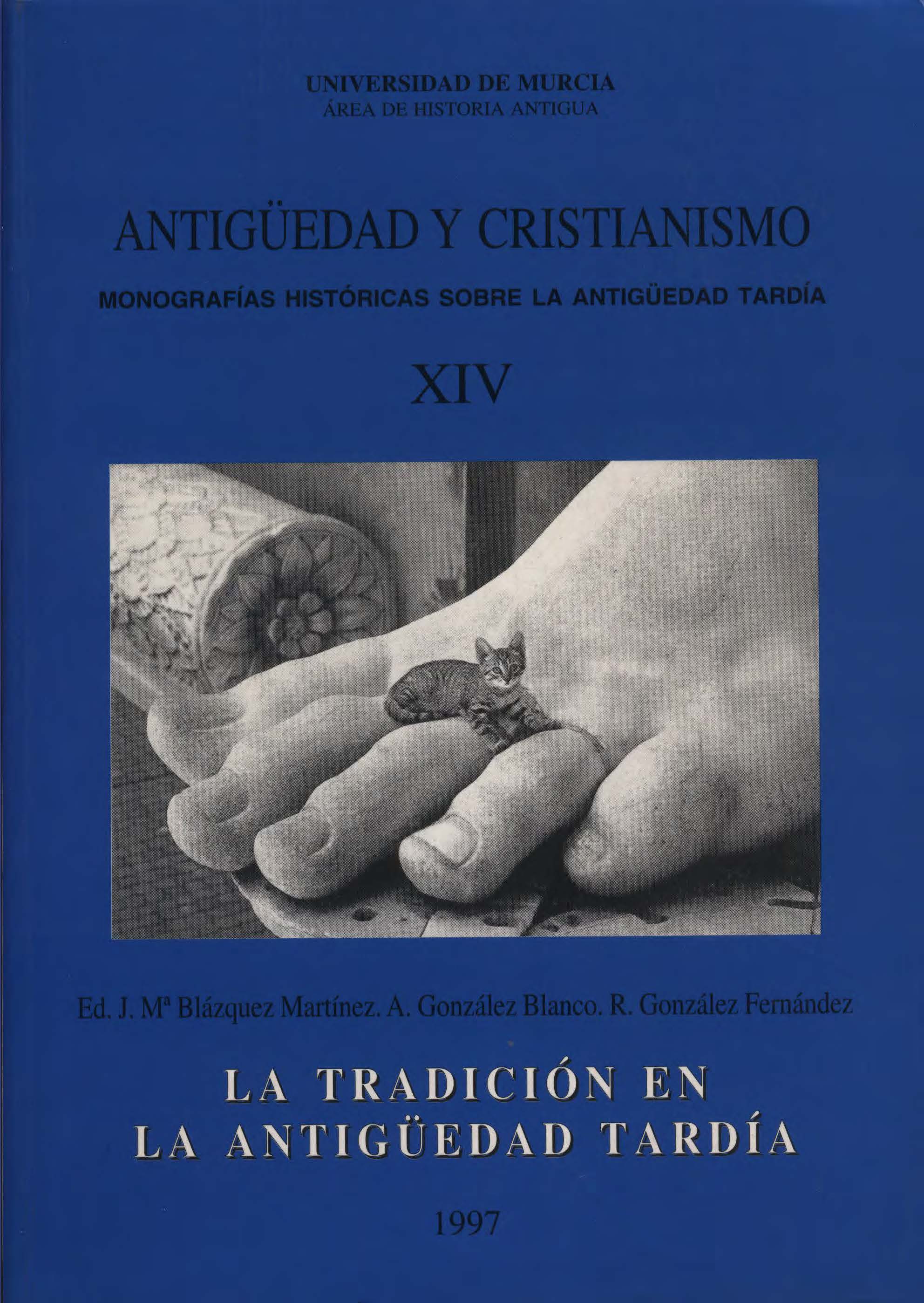
Tradition in Late Antiquity
No. 14 (1997)Man lives by habits. His instruction upon arrival in this world consists of habits, the teaching of language is equivalent to acquiring a series of habits with which to interrelate with others. The way of dressing and acting consists in adapting to habits that are usual in our cultural circles. That is why tradition is the key element in the configuration of social groups, cultures and ways of life. And this is perfectly conscious in the life of groups and in that of individuals, since our behavior is habitual in a percentage that borders one hundred percent of our movements. And we not only know it, we are also aware of the importance that this has in our life, that is why we have constituted the survival in such a cultural system in one of the definitive values of our existence: in religion, in morals, in work, and in Leisure and fun We are all struck by what we have experienced as children and the system in which we have been educated. It has taken us to get to the communications system that the second half of the 20th century has brought us so that we have been able to capture the wealth of other forms of life different from ours.
-
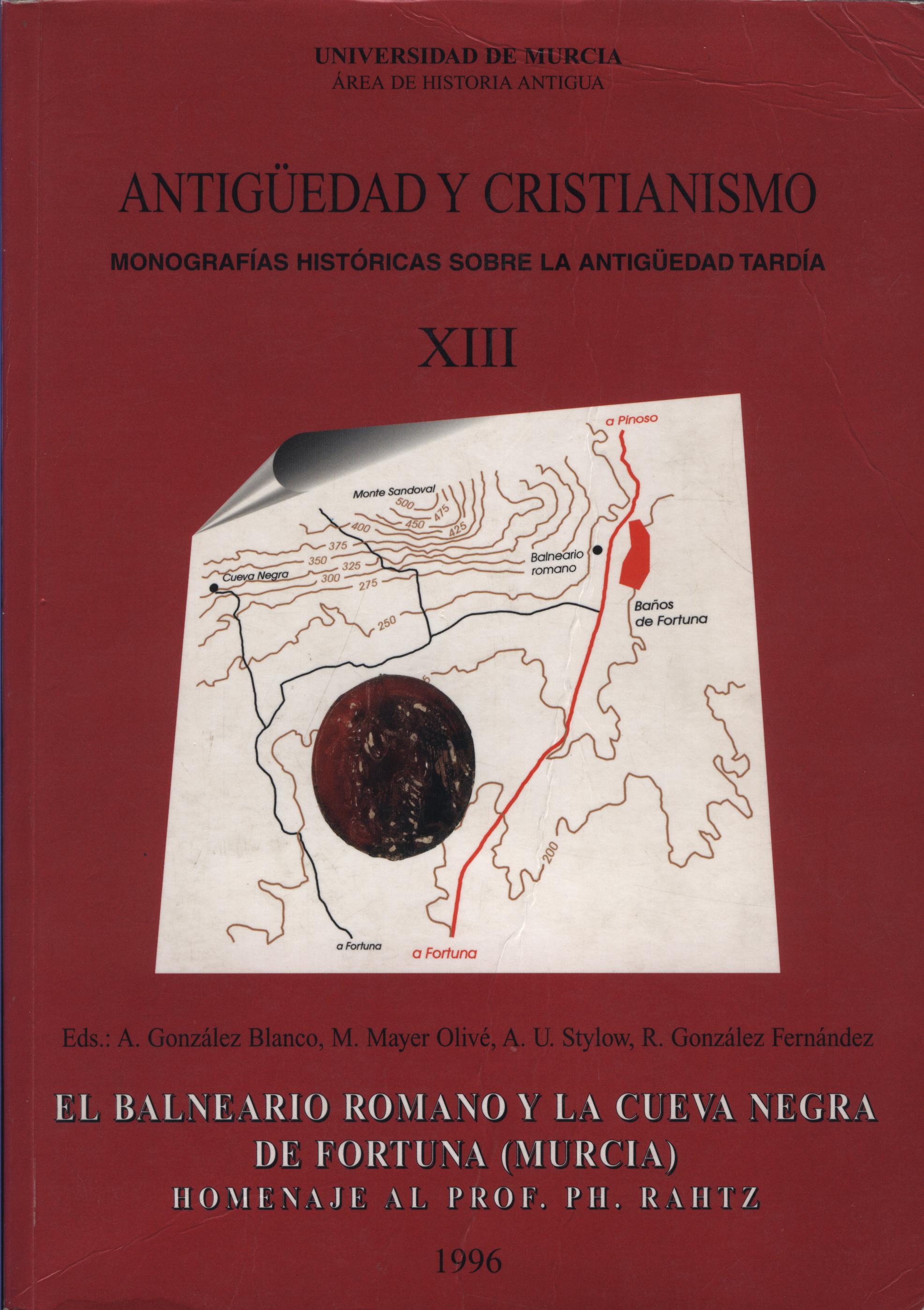
The Roman spa and the Cueva Negra of Fortuna (Murcia)
No. 13 (1996)When we offered the first version of the Cueva Negra theme1 in 1987, our position was extremely delicate. La Cueva and its "signs" were a real enigma, because we did not know anything similar in the Iberian Peninsula or in the entire geography of the Roman Empire and the readings we had managed to identify, if on the one hand they were absolutely trustworthy and confident in what their genuineness was about, we could not understand how they could have arisen there. Therefore, we strive to detect reference points in order to contextualize that most important finding.
-
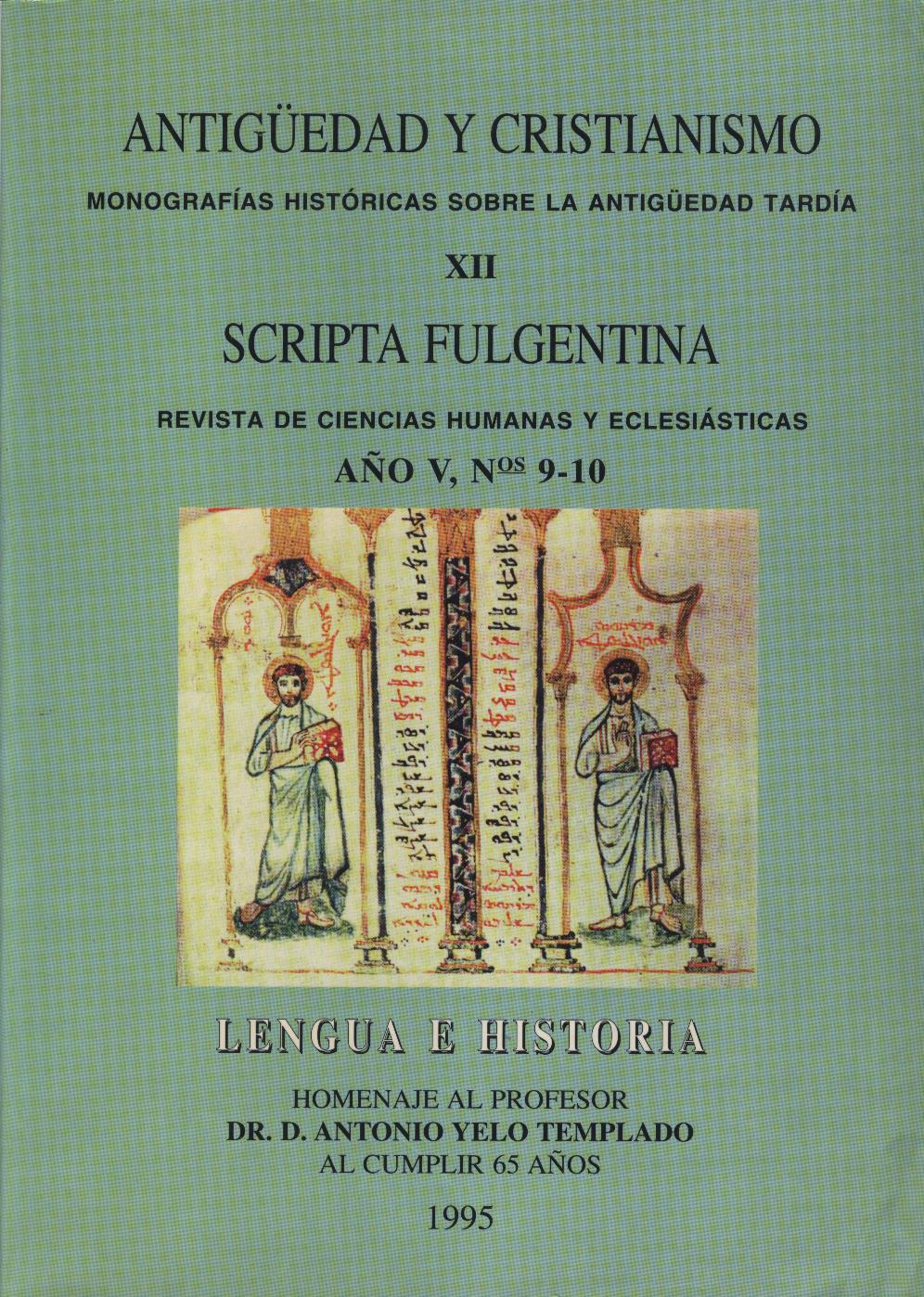
Language and History: Homage to Professor Dr. D. Antonio Yelo Templado
No. 12 (1995)When I arrived fifteen years ago in this land of chancers, Nazarenes and orange trees in bloom, previously unknown to me, my ship was fortunate to be the first to stray in the landscapes of Ancient History, not in those of the veteran of the "oikistes" that followed shortly after, Prof. Antonino Gonzalez Blanco, wise man, vivific outburst, teacher delivered to his students until the end. In illo tempore, the winds of our beloved Ancient History were blown by a feminine, a mulier fortis, who vindicated the helm before his title of Professor of Archeology, Epigraphy and Numismatics. However, despite its Prussian strokes, it is still alive in our recognition for the academic interest that it has always put in bringing together the various subjects that make up the antiquity sciences. This satisfied me, but did not impact me.
-
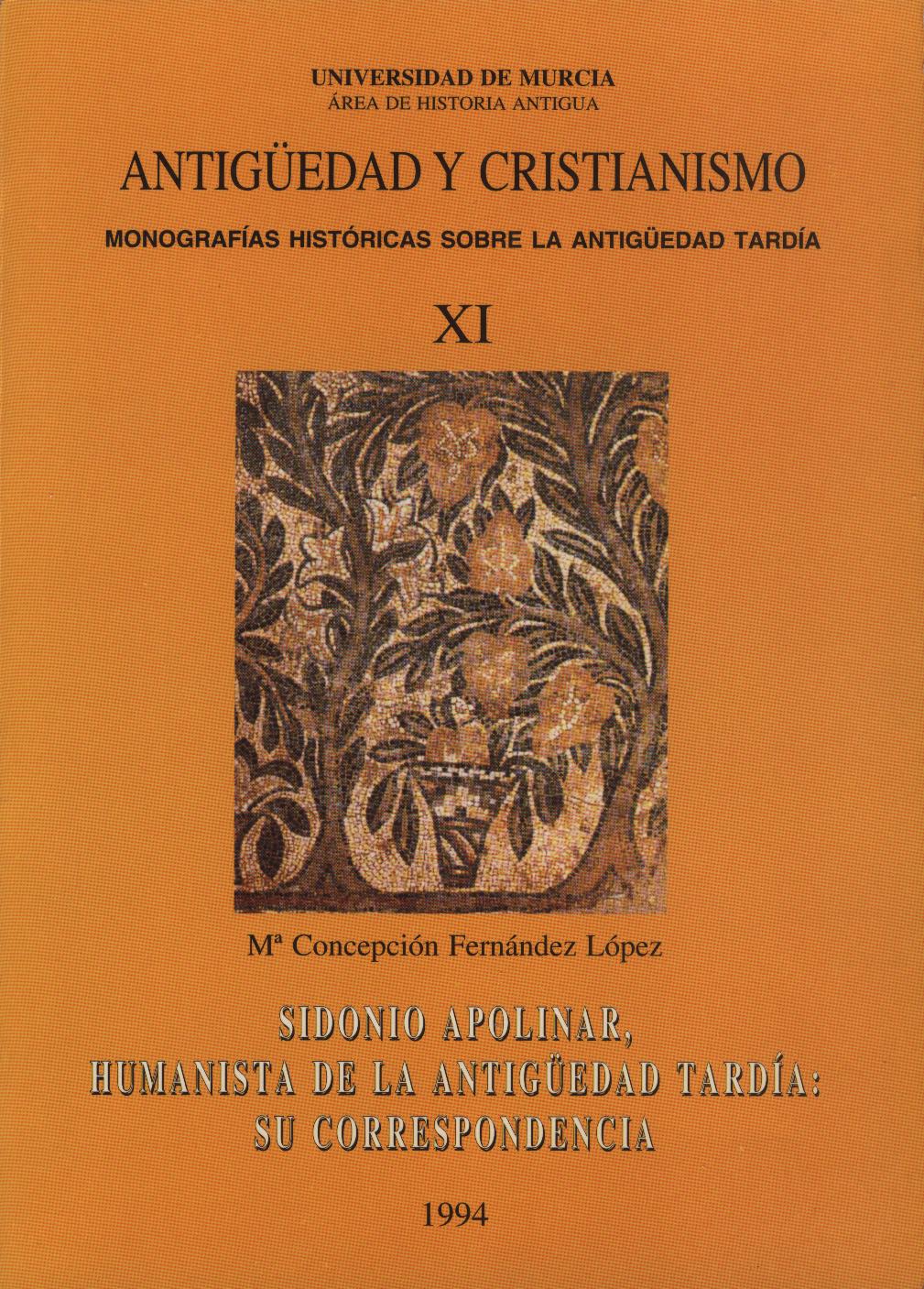
Sidonio Apolinar, Humanist of Late Antiquity: his correspondence
No. 11 (1994)The approach between the literary and the historical approach in the study of Antiquity is a trend of today. Leading figures of this orientation are, to give some significant examples, Pierre Grima in what refers to classical Rome and Jacques Fontaine in the field of Latin-Christian culture of the first centuries. I understand that the content offered in this study by Concepción Fernández López can be integrated into this line of work that, by merging these two profiles, provides an image that gives relief and proximity to what is analyzed. The political-social crisis of the Roman Empire in the 5th century produced in Gaul a situation in which the ecclesiastical hierarchy and the monasteries progressively assumed the role of conservators of culture, while the destruction of libraries and the decline of the school reduced the possibilities of cultivation of letters by the civilian population. A good number of nobles, if any, find their place in ecclesiastical life.
-
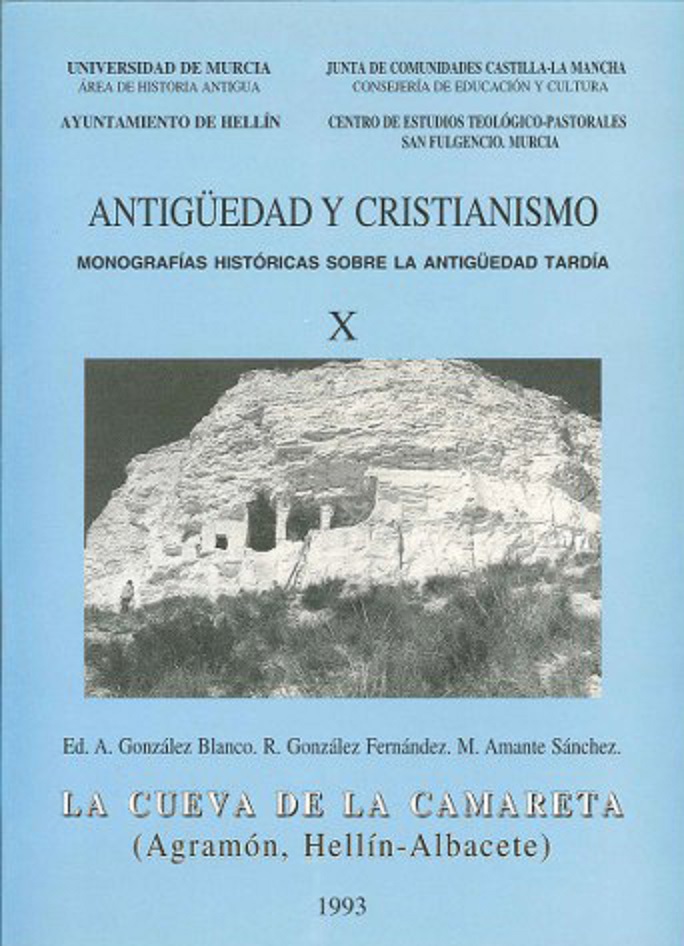
The Black Cave of the Camareta (Agramón, Hellín-Albacete)
No. 10 (1993)The archaeological message of the caves is an enigma to be deciphered in each case. In which we are dealing with the decipherment began fifteen years ago, back in 1980, when on a beautiful spring day and by the hand of Antonio Selva Iniesta we first went up to the cave and began tracing some of the inscriptions. The book in your hands is only one step in the investigation. We have managed to write a fairly complete overview of the content of the texts; but the problem or, rather, the problems of the cave all keep crying out for a formulation. The first question raised by the study of a cave is its morphology, its existence and reason for being, which is why an architectural archaeological approach to it is fundamental and is what we have first attempted here. We have to thank Professor López Bermúdez for his study on the geomorphology of the cave, which is endorsed by himself and the architects Messrs. J.L. García Aguinaga and José A. Villamor Pérez the planimetry work that we present and that allows us to capture the most important data that is the manufactory character of the grotto.
-
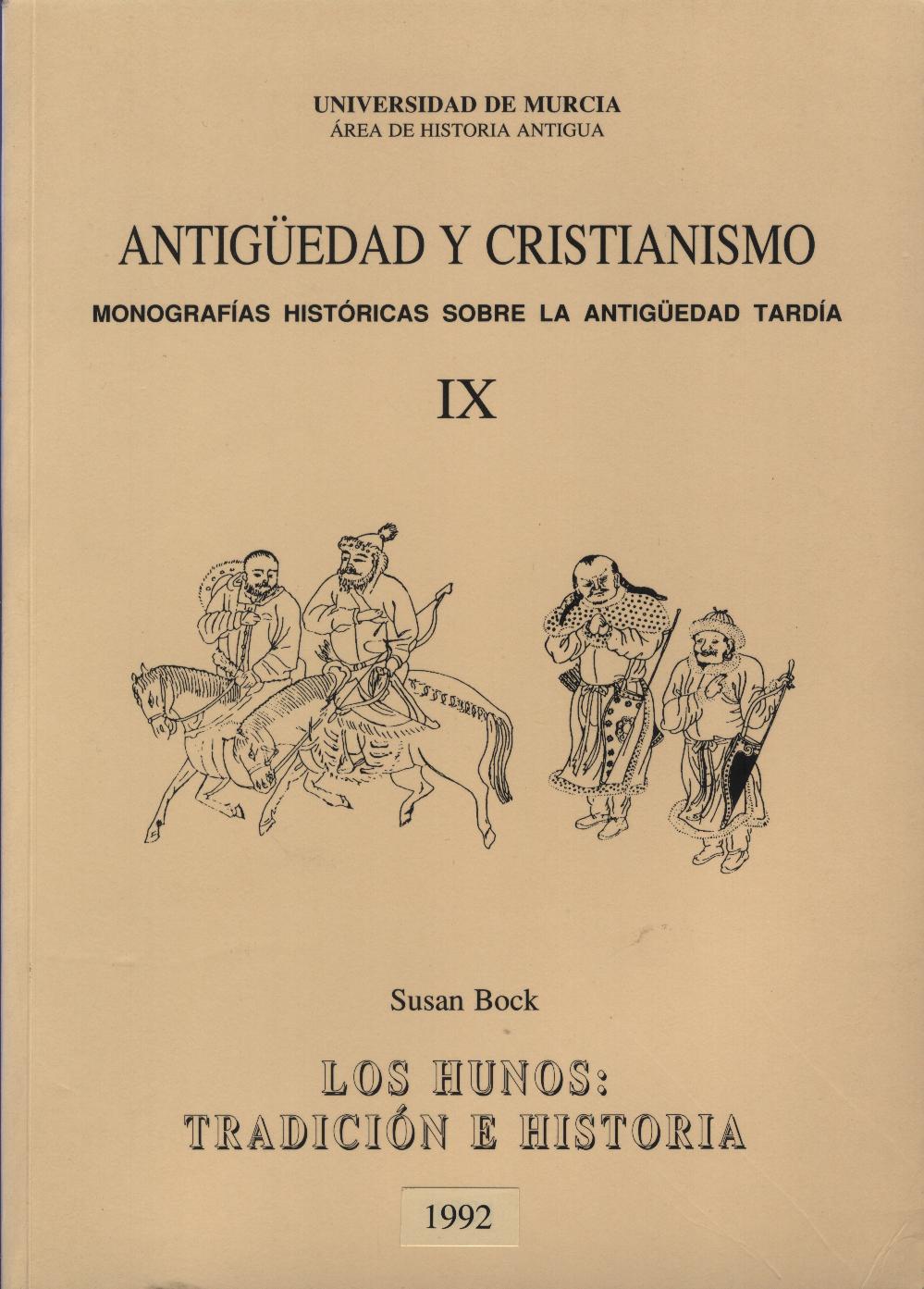
The Huns: Tradition and History
No. 9 (1992)Of all the numerous cases of empire mutations that world history has allowed to observe, the one that has most attracted the attention of laymen and scholars is the question of how it was possible for the Empire and the culture of Rome to collapse. ' There is no historian who has dealt with Roman history to whom the question has not been asked or who at some point in his scientific work has not thought about confronting the subject. And it is clear that when you preface a book like the one you are dealing with, the subject is inevitable
-

Art, Society, Economy and Religion during the Lower Empire and Late Antiquity
No. 8 (1991)ANTIQUITY AND CHRISTIANITY consecrates this volume, as a tribute of affection, to the figure of José M "Blázquez, whose academic Retirement took place in June 1991. This initiative, encouraged by some of his former disciples, offered two advantages: for one On the other hand, to ensure that the edition of the magazine coincided with the date of his last lesson in the classrooms; on the other, to be able to unify the different contributions within the framework of a field of research -that of Late Antiquity- that the honoree cultivated with special In return, the editors have been forced to restrict the number of invitations and collaborations, since the magazine could not substantially modify its usual format, and they are aware that very many other friends and colleagues would have gladly joined this celebration, have tentillo opportunity.
-
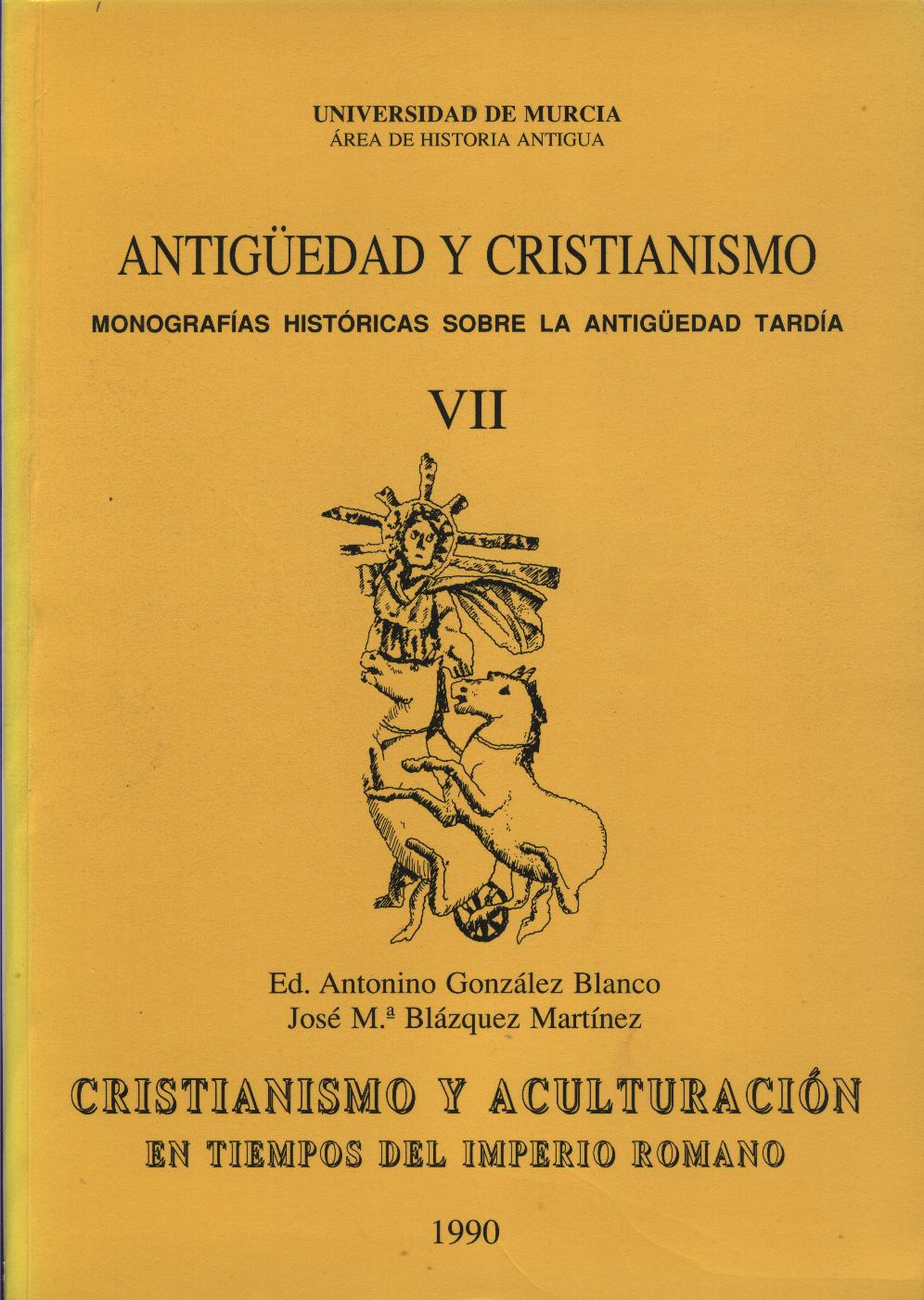
Christianity and Acculturation in times of the Roman Empire
No. 7 (1990)The works that we present today have been elaborated from the field of the sciences of Antiquity. They constitute a contact with the transcendental problem that forms the plot of History and that is that of the succession of cultures. The metamorphosis of the classical Roman world, among many other dimensions, had a profound contact with Christianity, which it influenced and was influenced by, and the proportions and degrees of intensity of the phenomenon are about to be determined. Probably, in the specific case that concerns us, it is necessary to have external elements to Christianity and the classical world in order to explain the configurations that both are acquiring. It is neither simple nor easy to account for the variations in anthropology that occur equally and simultaneously in pagans and Christians. Sensitivity to certain stimuli such as the desire for solitude, refusal to dialogue, faith in the materiality of lyrics, the return of interest in meta-empirical solutions and the emphasis that the world of the divine acquires in the centuries of Late Antiquity. The colloquium held in Madrid from October 13 to 15, 1988 was a very pleasant event for those of us who had the luck to participate and an intellectual experience of the first magnitude. The publication of his minutes continues and relives those beautiful days.
-
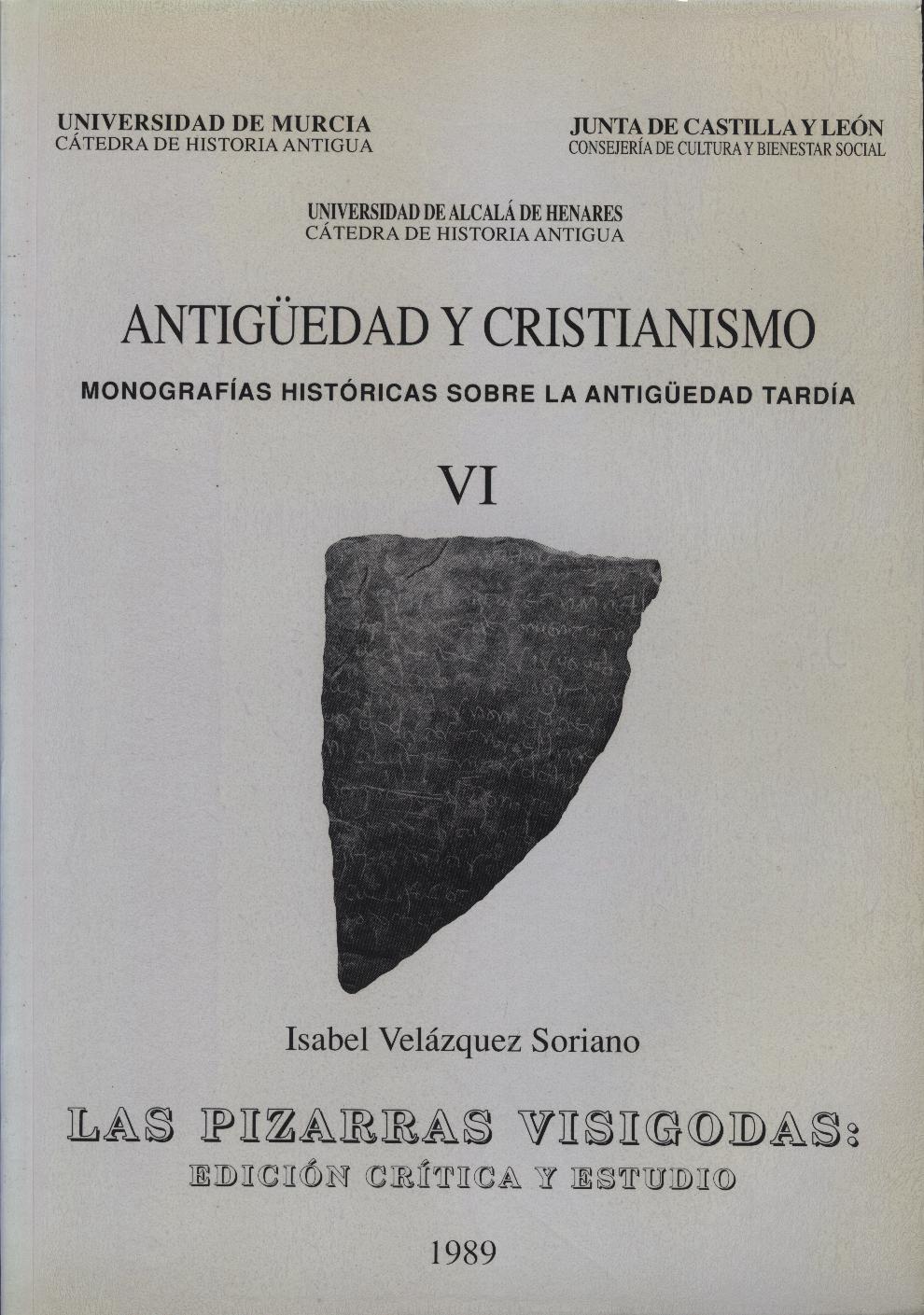
Visigothic slates
No. 6 (1989)Author and editor ask me for a few introductory words. It is not rhetorical if I say that it is an honor for me, thus being indebted to both. I certainly followed the realization of the origin of this book, which was Isabel Velazquez's doctoral thesis. I had frequent contacts with her, trying to complete from a historical point of view the priceless philological teaching of its first director, the mourning and kind D. Sebastián Mariner. From there, they moved on to a closer collaboration, as Isabel included herself in the small team of the research program "Sources for Spanish-Visigothic History and Civilization", sponsored by CICYT and coordinated by me. Finally, I had the honor and pleasure of being present, as a member of the court, in the most brilliant public defense of the doctoral thesis.
-
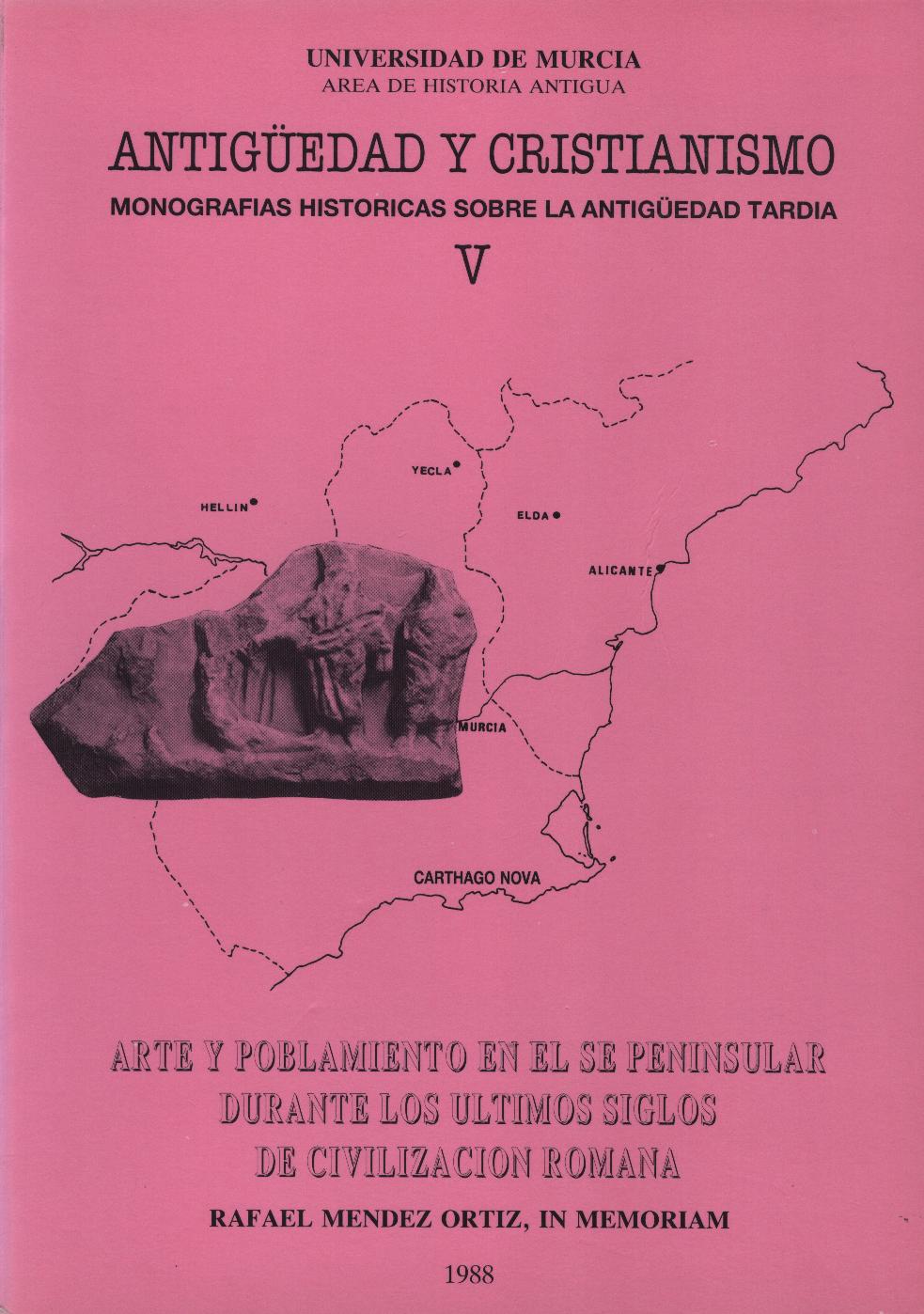
Art and settlement in the peninsular SE during the last centuries of Roman civilization
No. 5 (1988)On July 2, 1988, our colleague and, above all, friend Rafael Méndez Ortiz died after a tragic traffic accident. A hopeful career was barely started, whose first successes had turned expectation into reality. A lawyer in the defense of Cartagena archeology, his last days were marked by a relentless and relentless fight for the safeguarding of one of the most significant monuments in the Roman history of his city, the Blind Tower, Rafael, like all his friends. We called, he immediately captivated his interlocutors and new companions for his frankness and great human category; With his joy, which he knew very well how to infect others, he soon became an indispensable element in the excavations to which everyone resorted and with which everyone commented not only on technical issues, but even on human issues. He was confidant to many, that on the short summer nights they made him share their deepest secrets in search of their valuable advice. Helpful and affable he was the friend who could always be used with the certainty that he never disappointed us.
-
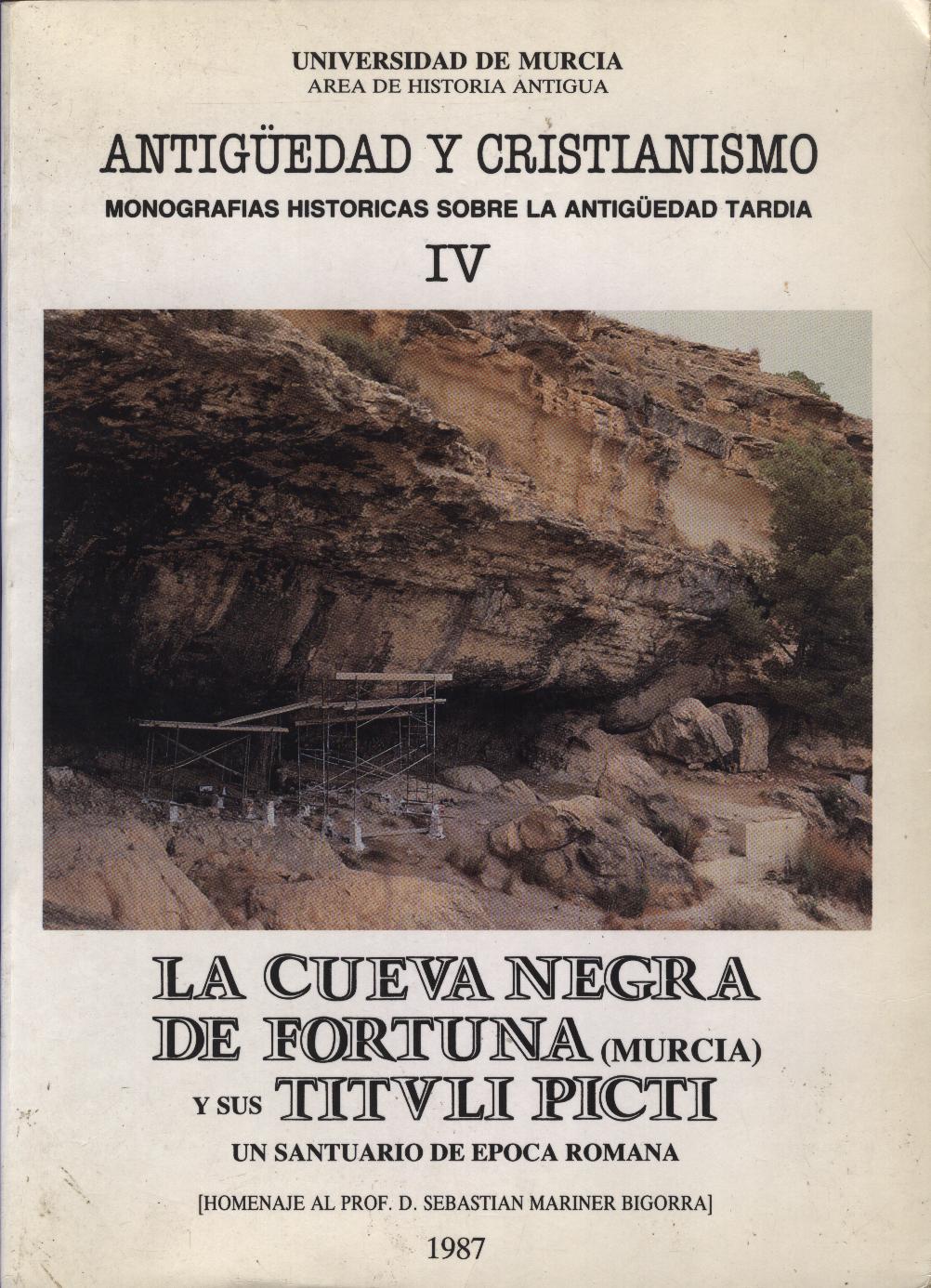
The Black Cave of Fortuna (Murcia)
No. 4 (1987)This book is a poem to friendship and love of science. It would not have been possible without both components to the utmost degree. Every step forward in the elaboration of the same has been an act of generosity by everyone, all who have participated in it. It is true that the scientific motivation, the intellectual incentive, once the object to be studied was known, dazzled in such a way that it was difficult to escape the excitement of participating in the company that had a lot of adventure and no less than ecstatic abstraction. From the first reading of the ASCVLEPI PRIESTS back in 1981, until the emergence of light and printing in 1985, many avatars have occurred, some of which are reflected in the pages of this volume and others will forever belong to the random legend of explorations of all time.
-
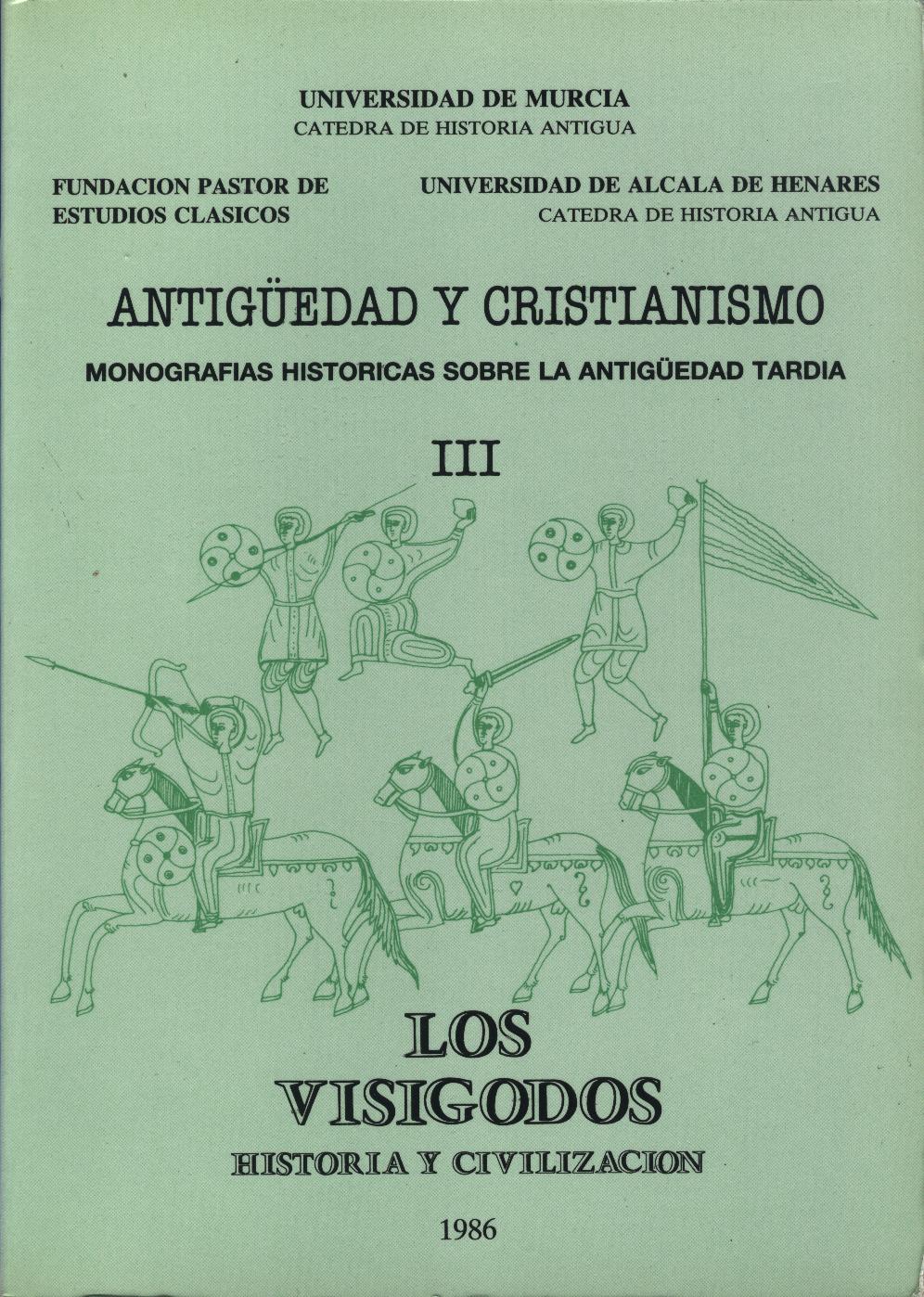
Visigoths: history and civilization
No. 3 (1986)The Pastor Foundation for Classical Studies, in its long and varied activity, has constantly tried not to limit itself to the topics strictly implicit in its statement, but to complement them with regard to the related fields of manuscript science, Epigraphy, Archeology, Ancient History ; and, thanks to the enthusiastic collaboration of self-sacrificing colleagues, he has been able to dedicate modest, but active seminars to the study, for example, of mosaics, important excavations, the Moncha puteal, royalty in antiquity; but neither have we believed that we should stop at the traditional milestone of 476. It is not possible, in fact, to understand the classic well if one ignores the post-classic, protomedieval, late-medieval or Renaissance .......
-

From the Conventurs Carthaginiensis to the Chora of Tudmir
No. 2 (1985)The research on the late Roman city of Begastri has led us to ask ourselves a whole series of topics about the time when this city was the episcopal seat and from such approaches the idea of dedicating a collective effort to update what in the investigations arose each one had to contribute to forging the image of the history of the peninsular SE for the centuries of the Late Antiquity and Visigothic stage. The result of this collective effort is what we offer here. The most important novelty of the works gathered here is to believe that, above the numerous new material put into circulation, it is the verification from many different points of view of the fact that Abadal pointed out many years ago: the life of these Mediterranean coastal areas on the fringes of the events that were developing in the center and north of the peninsula ...........
-
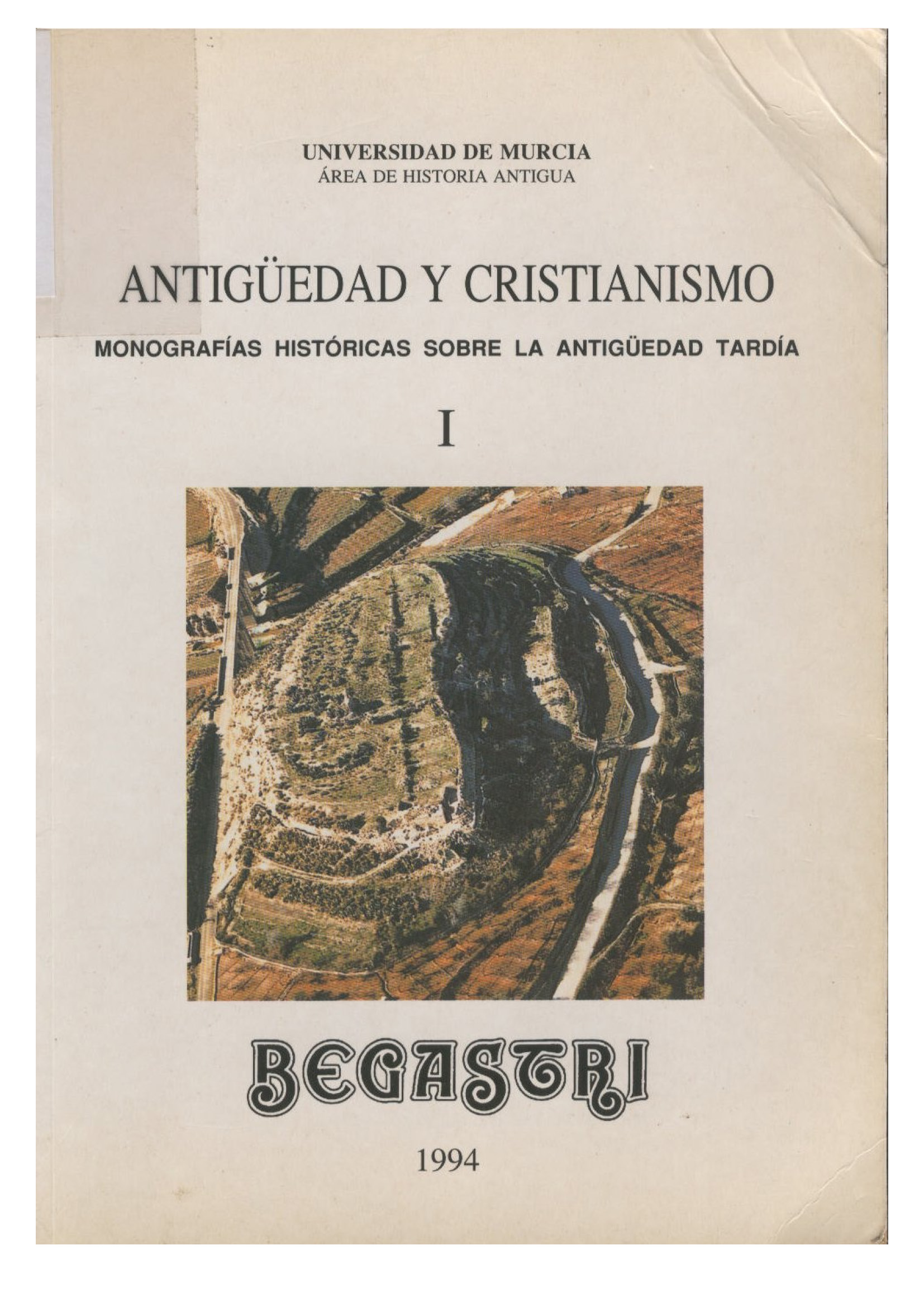
Begastri
No. 1 (1984)When in 1984 we made a modest exhibition about our excavations at the CABECICO DE ROENAS site and as a guide for that exhibition we composed the little book we called BEGASTRI. IMAGE AND PROBLEMS OF HIS HISTORY, we could not suspect its success. Not only did it run out in a short time, but it gave rise to the entire ANTIQUITY AND CHRISTIANISM magazine that we believe has done Begastri and the history of the Region of Murcia a great service; and a service no less than the entire history of late Hispanic antiquity. Ten years have passed and the Hon. Cehegín City Council has deemed it advisable to reissue the booklet. The initiative has made us very happy, but we have believed that since 1984 the state of affairs has changed markedly and some tweaks were required.
-

Las influencias bizantinas en la escultura visigoda. Análisis de los elementos decorativos procedentes del sureste hispano: Basílica de Algezares y conjuntos arqueológicos de Begastri y Cerro de la Almagra
Vol. 11 (2025)The book Byzantine Influences on Visigothic Sculpture, by Fabrizio Sanna, offers an in-depth analysis of the possible penetration of Byzantine art into the sculptural production of southeastern Hispania during the 6th and 7th centuries. Focusing on the archaeological sites of the Basilica of Algezares, Begastri, and the hill of La Almagra, the study begins from a debated historiographical premise: whether there was direct Byzantine influence or rather indirect diffusion mediated by Africa or Eastern communities settled in the peninsula. Sanna proposes an interdisciplinary methodology that combines technical, typological, and stylistic analysis of the sculptural elements (capitals, plinths, shafts, plaques, etc.) with a historical, archaeological, and cultural contextualization. The author identifies signs of a possible common workshop in the region, characterized by shared techniques and decorative vocabularies, and highlights a possible "Africanization" of local art rather than a strict Hellenization. He also provides a thorough review of the state of the question from the 19th century to the most recent studies, evaluating different interpretive schools. Finally, he emphasizes the role of Byzantine Spania and exchanges with North Africa as key vectors in shaping the regional Visigothic sculpture.
-
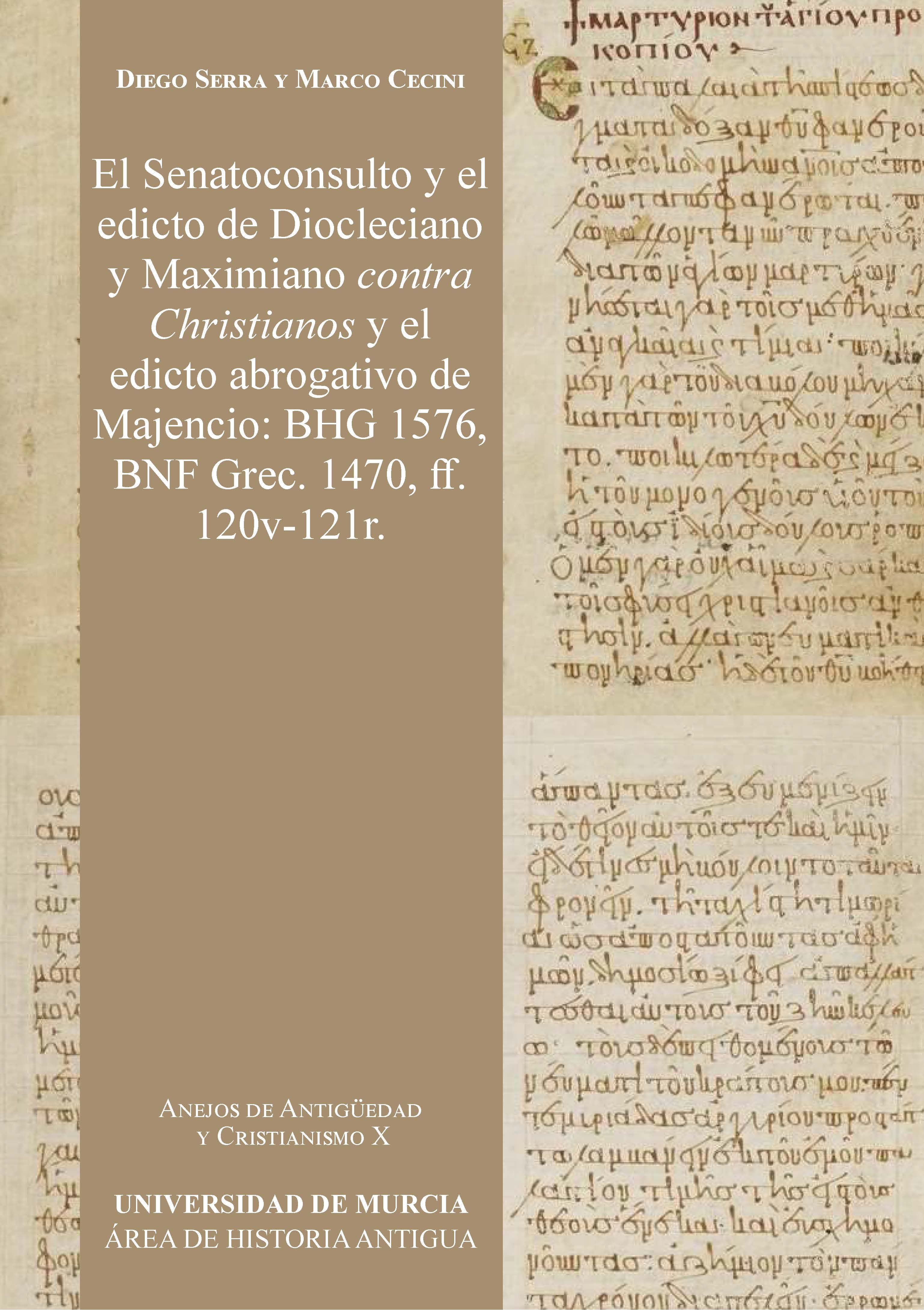
Anejos de Antigüedad y Cristianismo: El Senatoconsulto y el edicto de Diocleciano y Maximiano contra Christianos y el edicto abrogativo de Majencio: BHG 1576, BNF Grec. 1470, ff. 120v-121r.
Vol. 10 (2022)En este estudio se analizan tres constituciones imperiales pertenecientes a numerosas tradiciones manuscritas contenidas en doce códices bizantinos y posbizantinos, fechados entre los siglos IX y XVII. (Biblioteca Digital Hispánica; Bibliothèque National de France; Monasterio de Santa Catalina del Monte Sinaí-Egipto; Monasterio Vatopaidi-Monte Athos). Estas constituciones han sido analizadas desde un punto de vista histórico-jurídico, filológico-jurídico e histórico-crítico, y fueron sometidos a un examen comparativo con una selección de papiros jurídicos del Egipto romano (siglo I-IV dC) y con fuentes literarias romano-cristianas para evaluar su autenticidad y el nivel de interpolación.
El análisis de estos documentos parece confirmar lo planteado en los estudios previos sobre dos epístulas inéditas de Majencio en Anejos VIII y el Vol. 38/2021 de Antigüedad y Cristianismo, y también parece confirmar los estudios más recientes sobre la doctrina romanista ibérica (Rosa Mentxaka) en tema de la forma jurídica de las persecuciones de los cristianos en el derecho romano; las hipótesis de los estudiosos italianos sobre las funciones del Senado de la Antigüedad tardía (Arcaria, De Marini, Vincenti); y la fiabilidad de la narración de Eusebio de Cesarea en la Historia Ecclesiastica (Vol. 38/2021: Serra 2021b).
-
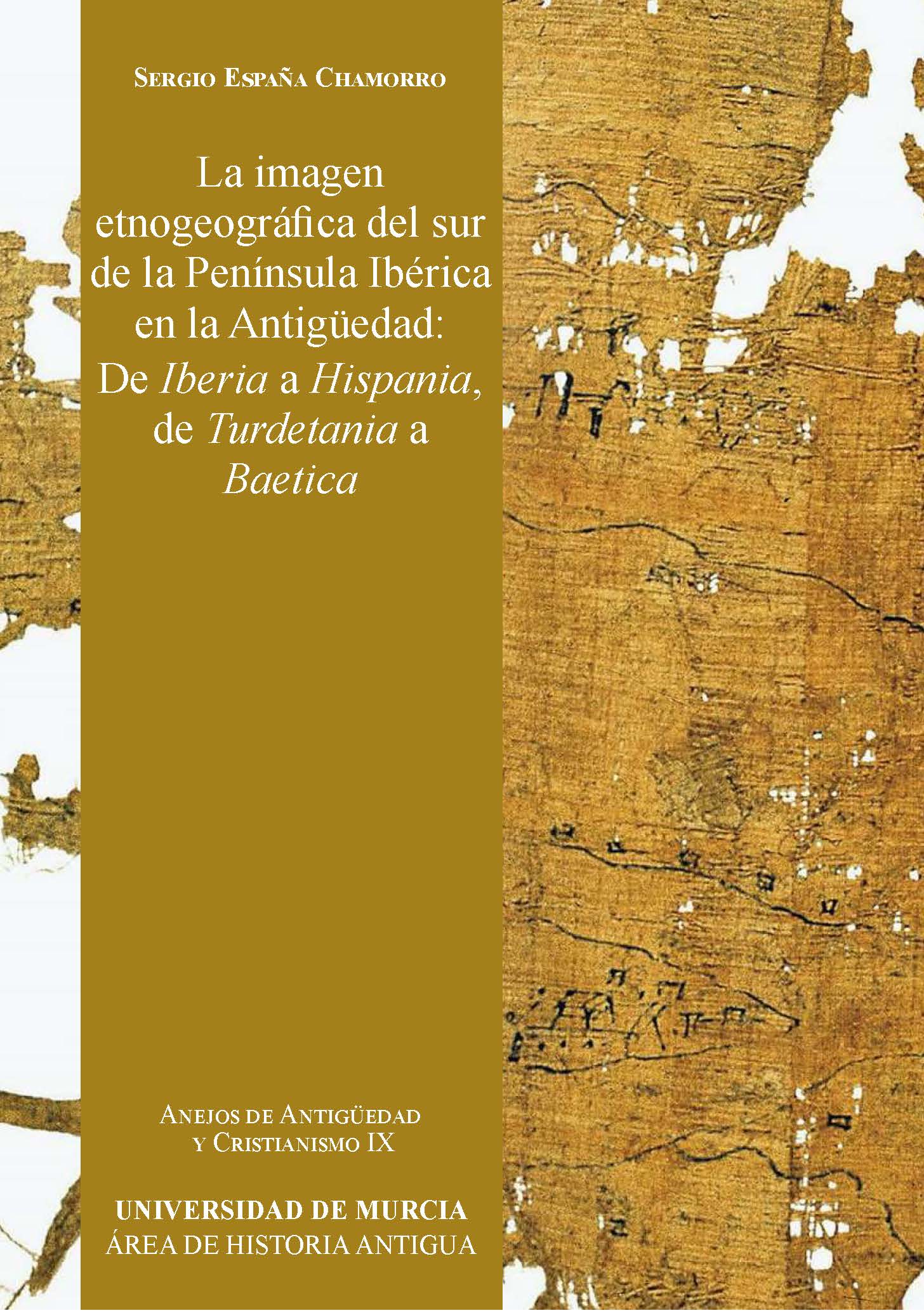
Anejos de Antigüedad y Cristianismo: La imagen etnogeográfica del sur de la Península Ibérica en la Antigüedad: De Iberia a Hispania, de Turdetania a Baetica
Vol. 9 (2022)Las claves del ser humano para ordenar la realidad de su entorno son el espacio y el tiempo. El objetivo de este libro es ver qué espacio se conocía en qué tiempo y la evolución de la imagen de la Península Ibérica desde un punto de vista crítico para ver qué fuentes existen y de qué manera abordaron su confi guración espacial y social de acuerdo a unos propósitos y objetivos cambiantes, a entornos culturalmente diversos y aclarar los tamices que tenemos que tener en cuenta a la hora de tratar con la información etnogeográfi ca de la literatura clásica.
Esta obra supone una recolección de manera crítica de la información geográfica y el tratamiento de la misma para entender su evolución simbólica durante la Antigüedad, además de la imagen generada desde la Edad Media hasta la Posmodernidad. Es de vital importancia comprender y analizar nuestras propias visiones de nuestro pasado para entenderlo, ya que en la creación del mismo hay que admitir el dicotomismo de la pretendida diferencia artifi cial entre objetividad y subjetividad. Es necesario recordar algunas ideas de Edward Said, por otra parte ya visibles en K. Marx, en donde dejaba entrever que el saber no es algo aislado y estanco de la política sino que está “éticamente contaminado” y que es un saber que “sirve para dominar”. Por ello, en nuestra labor de historiadores, hay que salvar el engaño inconsciente explicando las posiciones tomadas al respecto y hacer una Arqueología abiertamente política que supere la pretendida asepsia procesual, evitando así un tan pretendido como falso espacio neutro de enunciación, ya que todo enunciado científi co lleva implícita una ideología. En consecuencia, para buscar la tercera vía y producir interpretaciones objetivables u objetivas, es necesario usar precisamente un método interpretativo que permita enunciar e interpretar. -
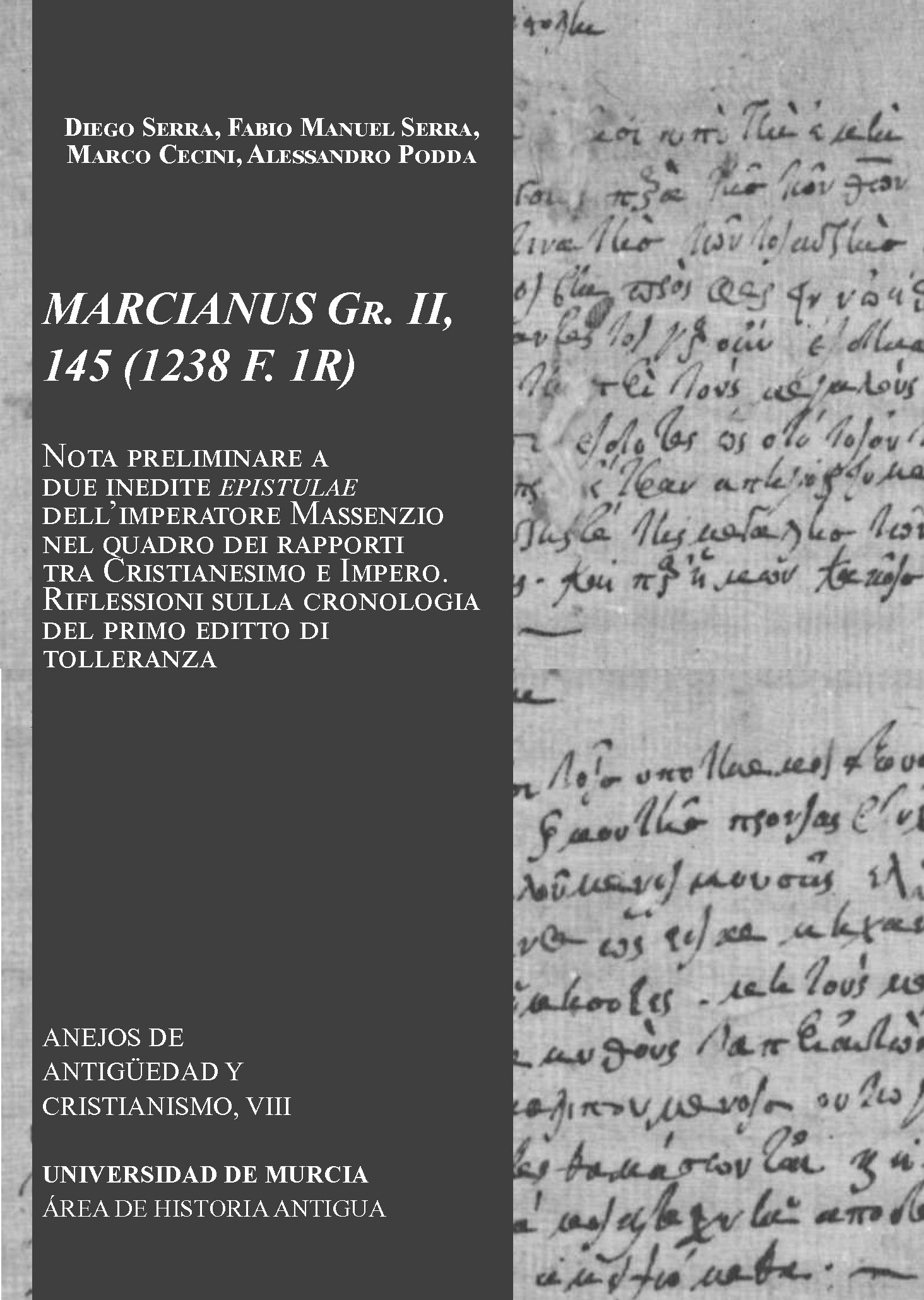
Anejos de Antigüedad y Cristianismo: Marcianus Gr. II, 145 (1238 F. 1R). Nota preliminare a due inedite epistulae dell’imperatore Massenzio nel quadro dei rapporti tra Cristianesimo e Impero. Riflessioni sulla cronologia del primo editto di tolleranza.
Vol. 8 (2021)This study carefully analyses two unpublished documents coming from the Greek collection of the Biblioteca Marciana in Venice (former Collezione Naniana), preserved in a manuscript dating back to the 16th century. The paleographic, codicological and diplomatistic analysis performed on f. 1r from Marc. Gr. II, 145 (1238) (fig. 9-11), in an excellent state of conservation, aimed at proposing a diplomatic, diplomatic-interpretative and genetic edition of two legal letters, written in Greek, which display the name of the emperor Maxentius in the intitulatio.
A grammatical, syntactical and morphological analysis has been performed in order to assess the content of the documents. A linguistic comparison has been drawn between Medieval/Early Modern Greek and Classical/Koiné Greek, underlining all the aspects related to morphology, syntax and phonetic transformations, transformation of nouns and verb forms that – it is assumed – might have occurred during a long timespan from Medieval to Early Modern Period.
This allowed us to discuss some hypothesis and conjectures to assess, as follows:
- the authenticity and the level of interpolation of the two letters at issue, preserved for about 1200 years (AD 4th to 16th century) in the Byzantine archives, thanks to a long chain of transcriptions; and
- to define the sociocultural context in which they were produced, in order to give evidence as to the dating of the letters, given the absence of subscriptiones for both texts.
One of these two documents, in particular, might be considered as the source of direct knowledge of the edict of tolerance by Maxentius, quoted by Eusebius of Cesarea, that is, the letter of transmission of the first edict of tolerance (s.c. Letter-Edict, according to Mazzarino's terminology) which officially put an end to the persecutory edicts of Diocletian in the West; whereas the second document (of a more uncertain legal nature, presumably a fragmentary rescriptum rather than a general law) could instead refer to an attempt by Maxentius to regulate the disputes that had arisen between Christians and Lapsi, and could better explain the reason of an alleged intransigence, attributed by some sources to Maxentius, towards some members of the Christian communities. This study elaborates and discusses some hypotheses, posing some questions: future interdisciplinary studies will be necessary to better clarify and specify all the points discussed in this preliminary note.
-
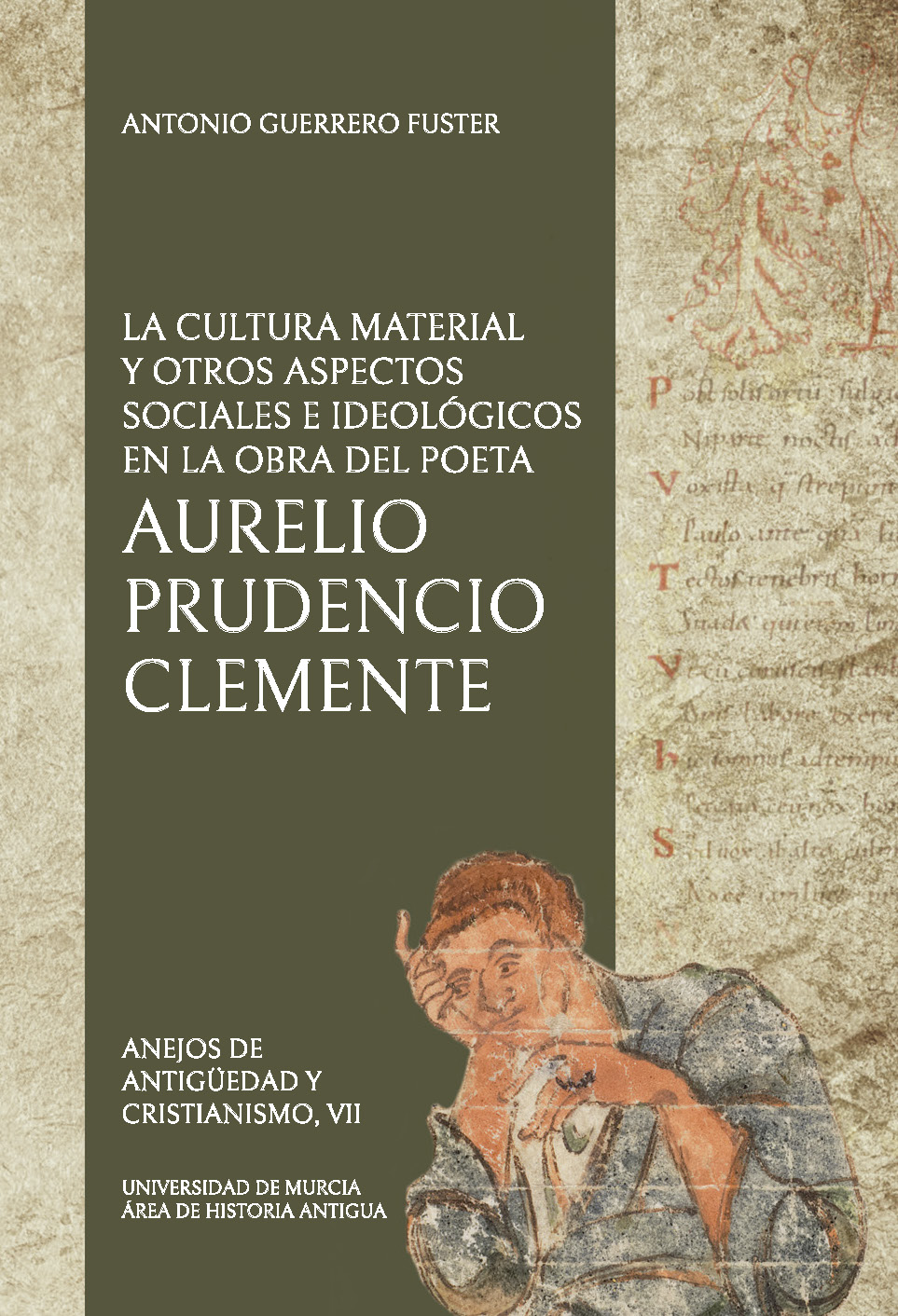
Annexes of Antiquity and Christianity: Material culture and other social and ideological aspects in the work of the poet Aurelio Prudencio Clemente
Vol. 7 (2019)What Prudencio reveals in his works on material culture is of little importance, but that will not happen. They are counted beans in the language that Prudencio transmitted to us. The interpretation of such texts and the connections they may have and the evaluations that can be made will require the bibliography as material without which the company will not be possible. I have learned a lot from Prudencio. But the school is still open. The complex material that his works put before our eyes, as well as the sequence of the reflections that have been made about himself as well as the evolution of such thoughts are the field of work that is open to all and that can make us all think deeply. and not only on Prudence but on the entire history of Humanity.
-
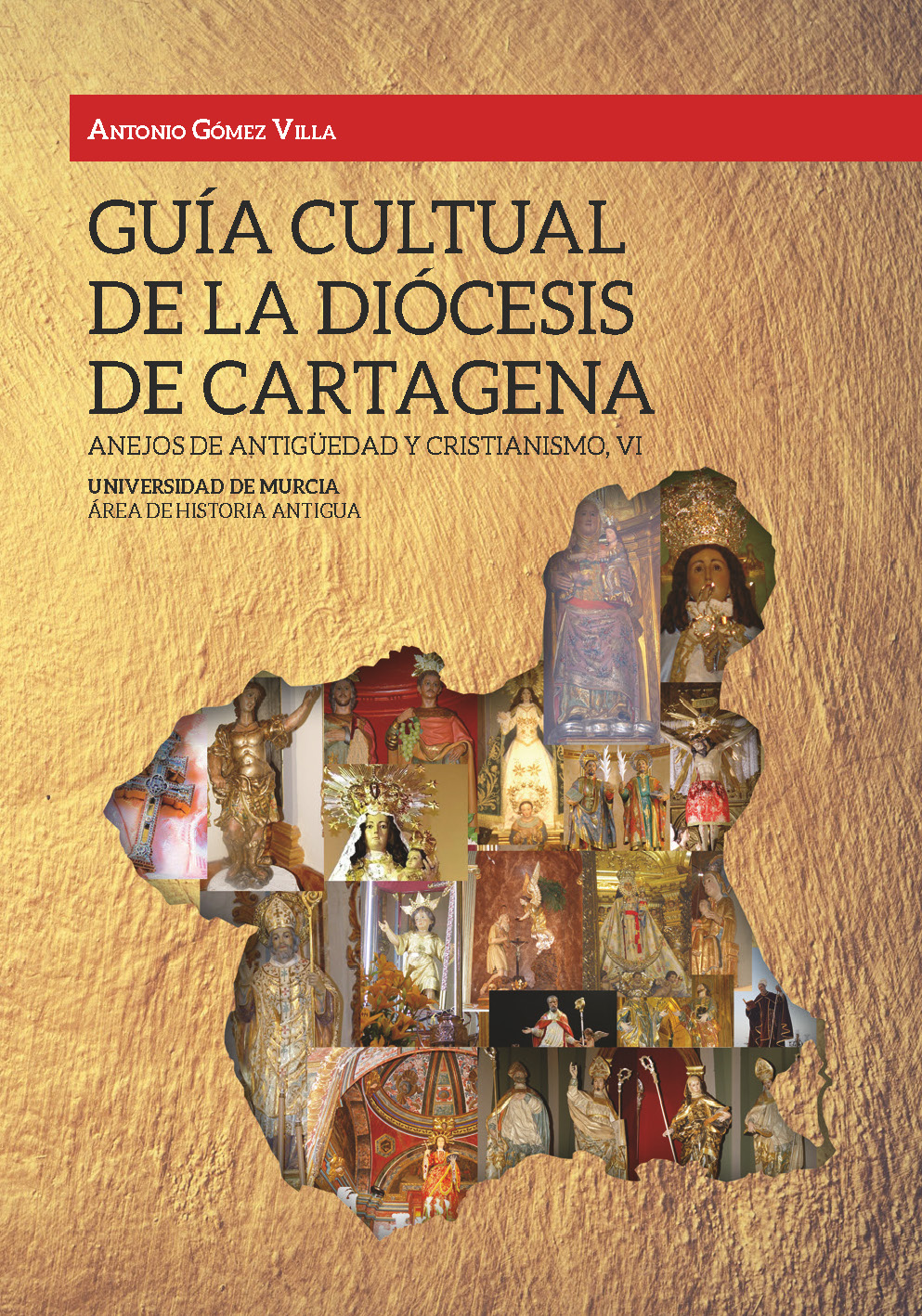
Annexes of Antiquity and Christianity: Cultural Guide of the Diocese of Cartagena
Vol. 6 (2019)The book we present deals with the WORSHIP OF SAINTS IN THE DIOCESE OF CARTAGENA. It is clear that in the history and for the history of a community of faithfuls the cult is central, and that knowing its history is an essential condition of the patrimonial consciousness of such a community. In all the Christian world the center of the cult always and essentially It has been the HOLY TRINITY, revealed by Jesus of Nazareth, man and second person of the Trinity and present in the Eucharist, essential reference and raison d'être of all temples. And within the mystery of Jesus, the Blessed Virgin has always had an absolutely central and indisputable relevance. The worship of God, revealed by Jesus Christ, is the reason for the celebrations and the entire organization of the Liturgical Year, as well as the most significant manifestations of Christian life and, therefore, of the Cultural Anthropology of Christian civilization. .....
-
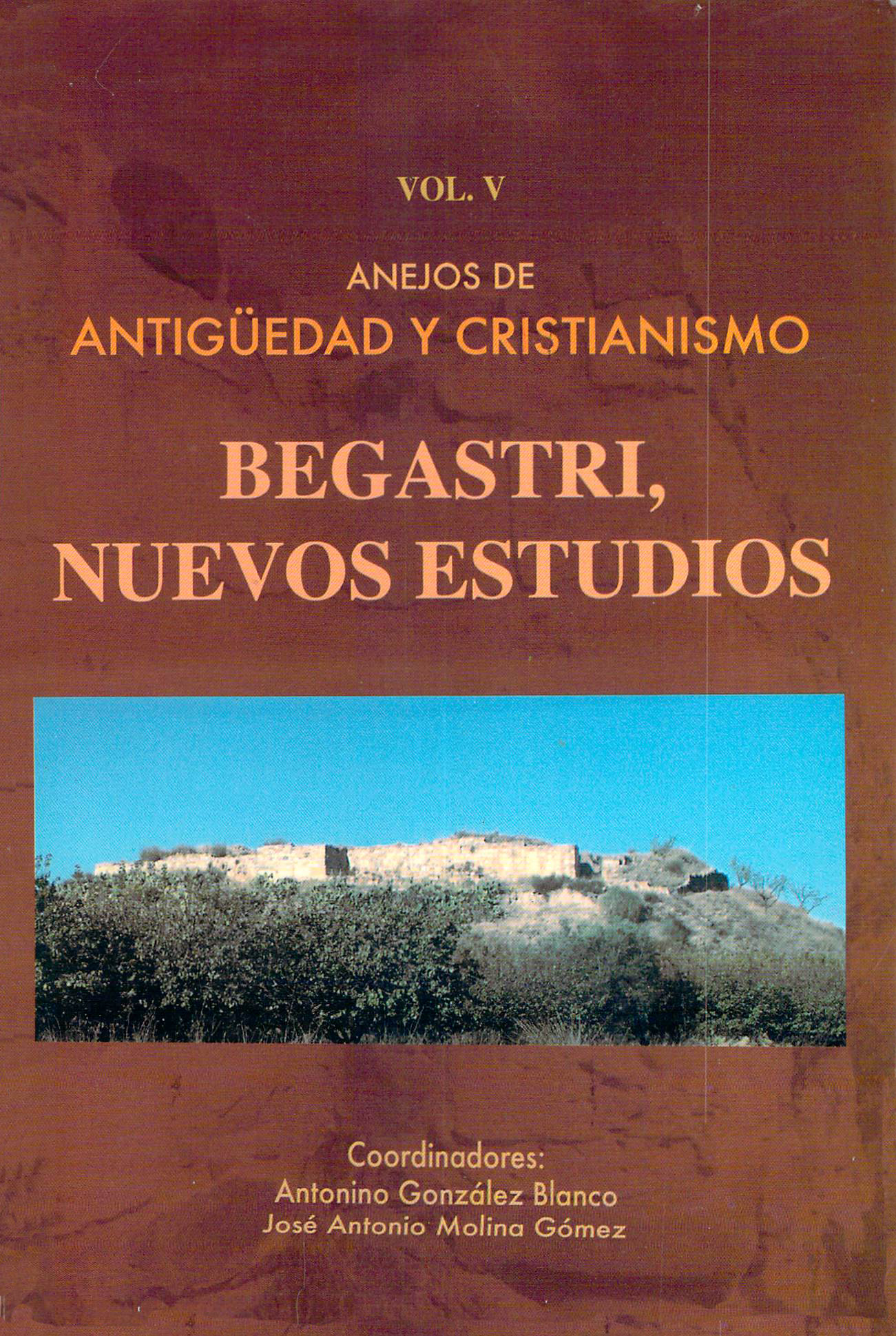
Annexes of Antiquity and Christianity: Begastri, New Studies
Vol. 5 (2006)Making the memory of excavations of a moderately short campaign consists of describing as precisely as possible what was found in it. It is not always easy, because in order to describe what has been found it is essential to have understood it, something that does not usually happen until the excavator takes a pulse on the site, but it is not impossible to approach this elementary description. A site is a complex matter, because in addition to describing it is inevitable to recreate the morphology of the site, of the type to which the site belongs and fill with flesh and blood the life that was lived first in each of its stages and then formalize the settlement history.
-
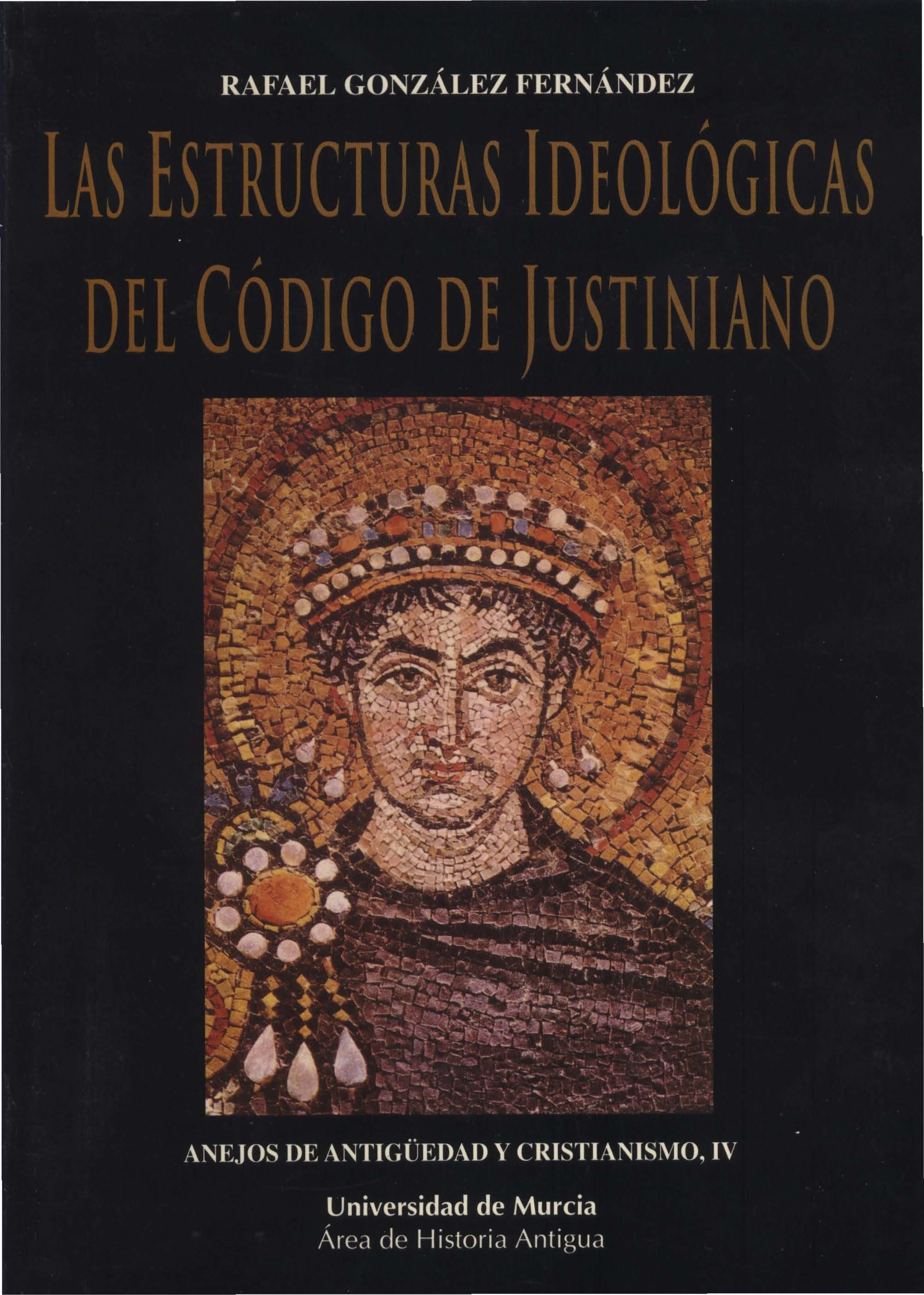
Annexes of Antiquity and Christianity: The ideological structures of the Justinian Code
Vol. 4 (1997)The consideration of the Codex Iuris Civilis has gone through multiple stages throughout the history of research. Mitteis, trying an extensive treatment of the privadoromano right, was put as a limit the epoch of Diocletian, confessing not to be able to advance any further because between the law of the classical jurists and that codified by Justinian there is given a talantithesis that is excluded any "zusammenfassende Behandlung". Still in 1933 Biondo Bioni approaching the intelligence of the Corpus Iuris Civilis believed that "considering the Justinian law from the historical point of view some of the difficulties that have tormented the ancient interpreters vanish".
-
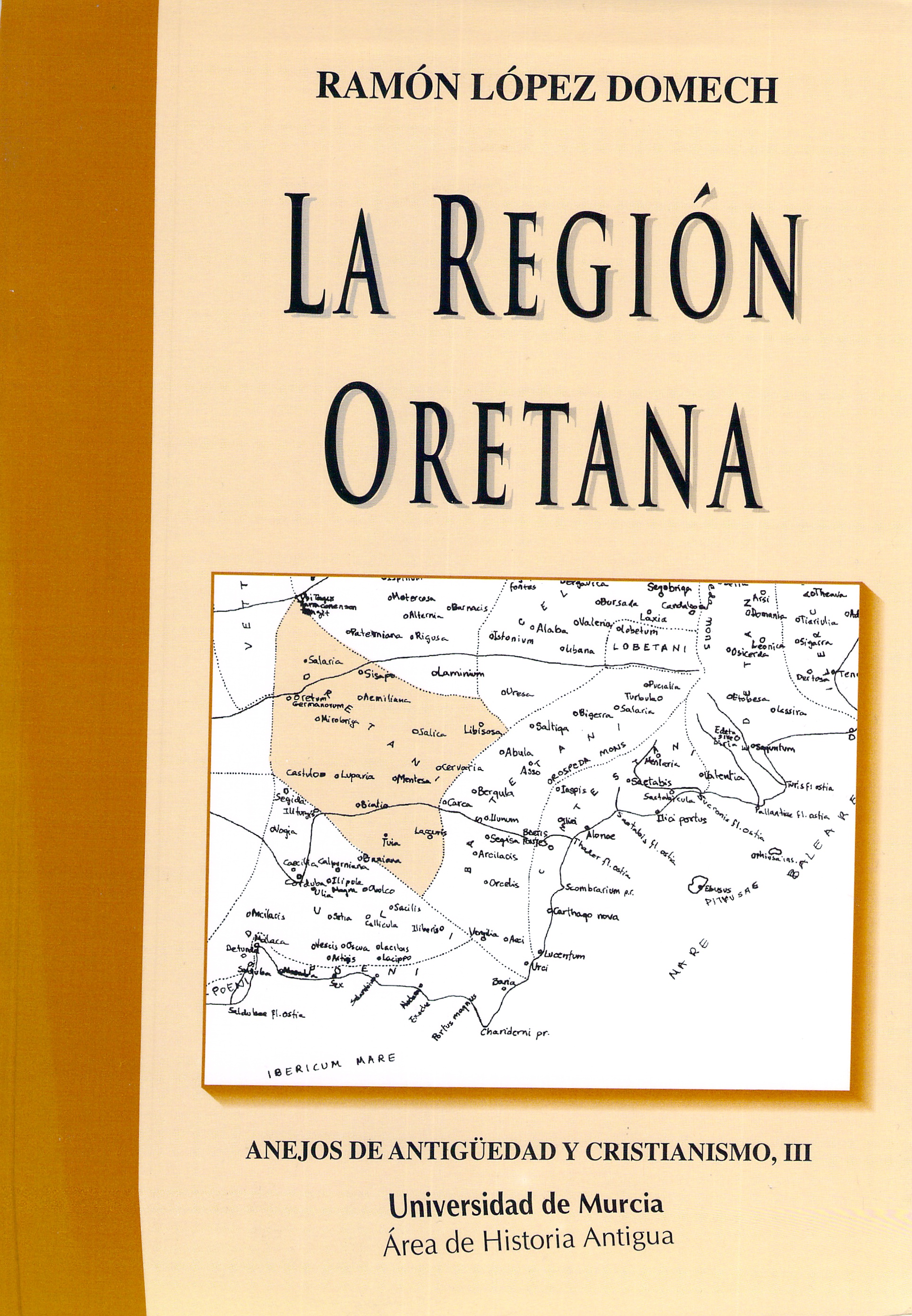
Annexes of Antiquity and Christianity - The Oretana region
Vol. 3 (1996)With the publication of this study on THE ORETAN REGION, we intend to give shape to illusions felt and expressed throughout meetings and projects, which see inter-university cooperation as an extremely effective instrument for the study of land organization in the peninsular SE in Roman times. Indeed, for a long time, professors of Ancient History from the Universities of the old university district of Granada, that of Valencia and Alicante and that of Murcia have been talking about the advisability of joining efforts to study in depth the subject of Roman urban planning throughout the Southeast quadrant of the Iberian Peninsula.
-
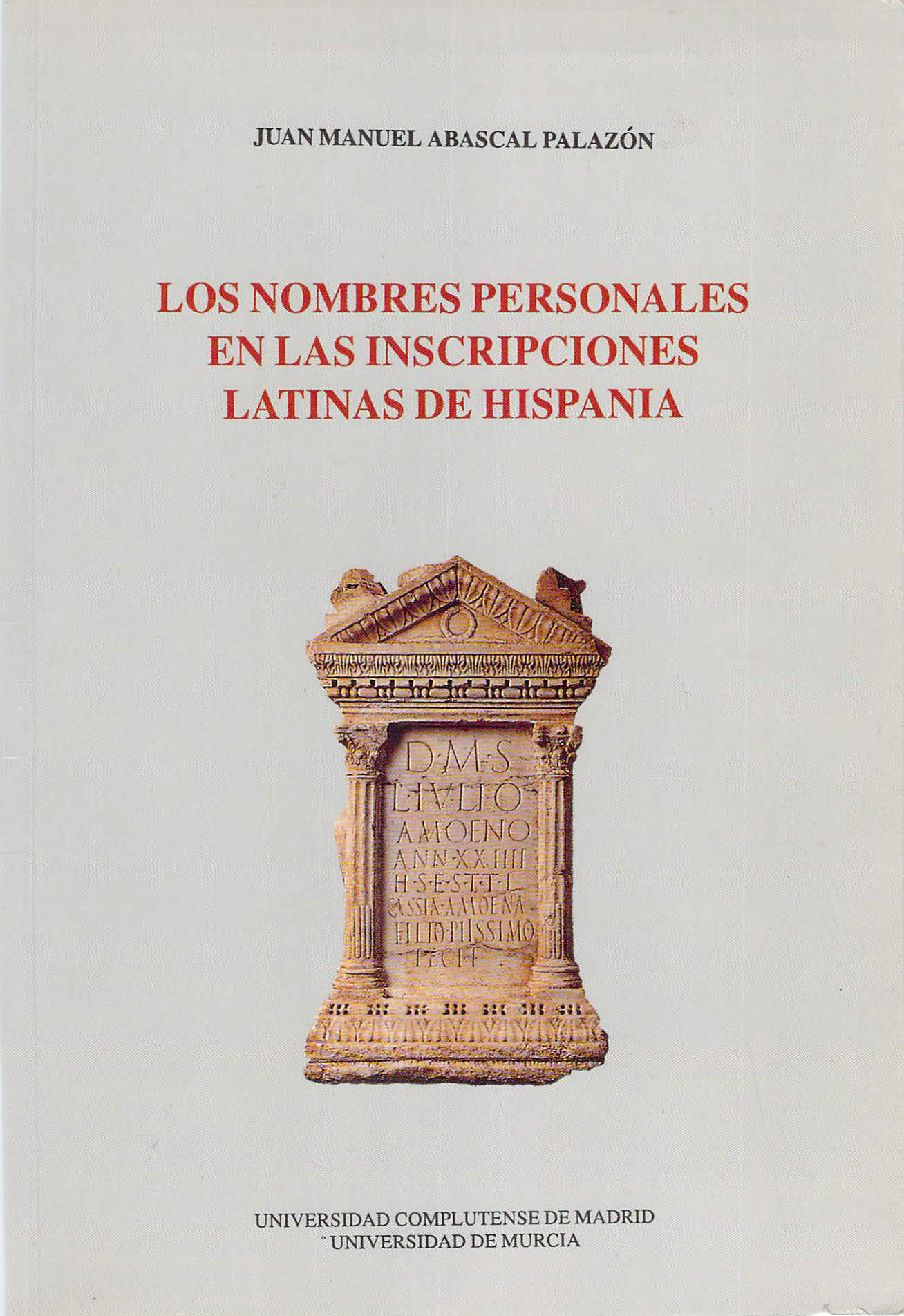
Annexes of Antiquity and Christianity: Personal names in the Latin inscriptions of Hispania
Vol. 2 (1994)The elaboration of this repertoire has raised not a few methodological problems, the main one of which has been the criterion of information selection. In the first place, in the territorial scope: opting for the information of the luspanic inscriptions meant forgetting the population emigrated outside the Peninsula, fundamentally soldiers, and using data of emigrants arriving in Hispania from other points of the Empire, including the officials; Including Hispanic emigrants implied expunging texts with immigrants in the Peninsula, even in those cases not declared in the epitaphs, which clearly seemed impossible.
-
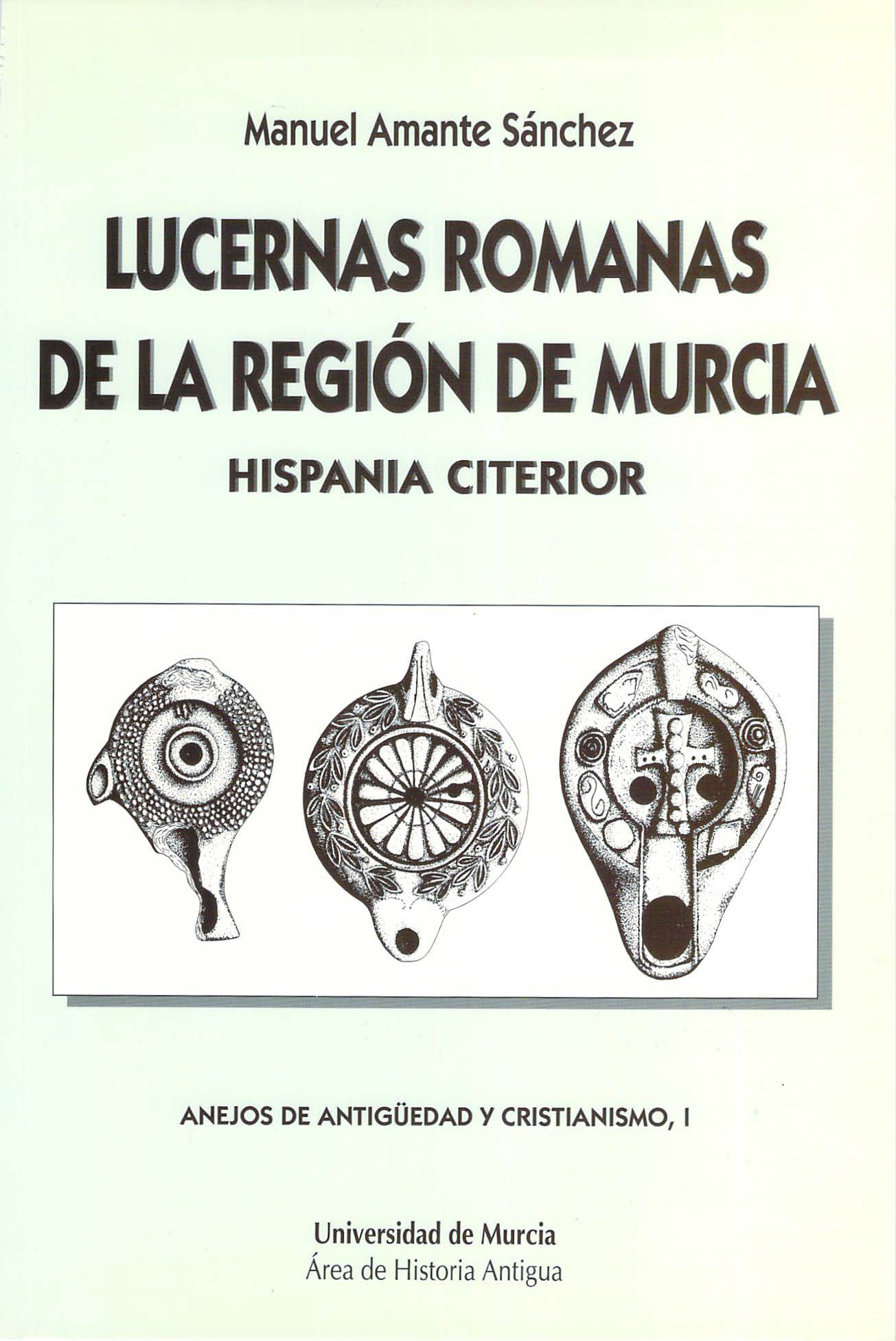
Annexes of Antiquity and Christianity: Roman skylights in the Region of Murcia
Vol. 1 (1993)Among the ceramic production of the ancient world, the lights stand out for their functionality and beauty. Until obtaining their final form, the lamps underwent a long evolution that dates back to Prehistoric times, where they were made of bone and stone, using fuel as animal fat. With the appearance of agriculture in the Mediterranean basin, the skylights will undergo a total transformation. Mud will now be the raw material used in its manufacture, and olive oil, the ideal fuel for its operation. The oldest, made by hand or at slow speed, are flat, open bowls in the shape of a bowl. Over time, a kind of beak will be added to them, pinching the clay with their fingers (model Phoenic-Punic lamp). Sometimes there is more than one lighting port. Following its evolution, later the skylights will present a circular body, spout, handle and the beginning of a simple border, introducing the edges of the piece towards the inside of the body (classical Greek model). Above these will come the first Lenistic lamps and later the Roman ones. It will be at the end of the second century. C., when with the generalized use of molds, they can be manufactured in quantities that favor their export.





















